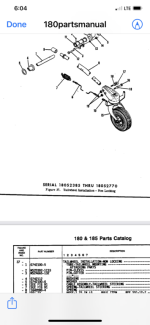Gordon Misch
MEMBER
Toledo, Wa (KTDO)
Nope, not mine - for a neighbor buddy.
'71 C180H. When the plane is shoved back and forth laterally at the tail (has to be vigorous) with the tailwheel in trail, there is a sharp creaking/snapping/popping/metallic sound that seems to come from somewhere around the center of the stabilizers.
All three rubber bushings and all bolts were replaced during the just-completed annual, in hopes of curing the issue, but it is unchanged. We (owner, me, mechanics) don't think it's originating at the tailwheel head, because of the nature of the sound and no detectable relative motion at the tailwheel head or where the head attaches to the stinger.
We'd sure appreciate thoughts re what to suspect, and suggestions for next steps - hopefully without removing the empennage just yet.
Thanks!
'71 C180H. When the plane is shoved back and forth laterally at the tail (has to be vigorous) with the tailwheel in trail, there is a sharp creaking/snapping/popping/metallic sound that seems to come from somewhere around the center of the stabilizers.
All three rubber bushings and all bolts were replaced during the just-completed annual, in hopes of curing the issue, but it is unchanged. We (owner, me, mechanics) don't think it's originating at the tailwheel head, because of the nature of the sound and no detectable relative motion at the tailwheel head or where the head attaches to the stinger.
We'd sure appreciate thoughts re what to suspect, and suggestions for next steps - hopefully without removing the empennage just yet.
Thanks!




